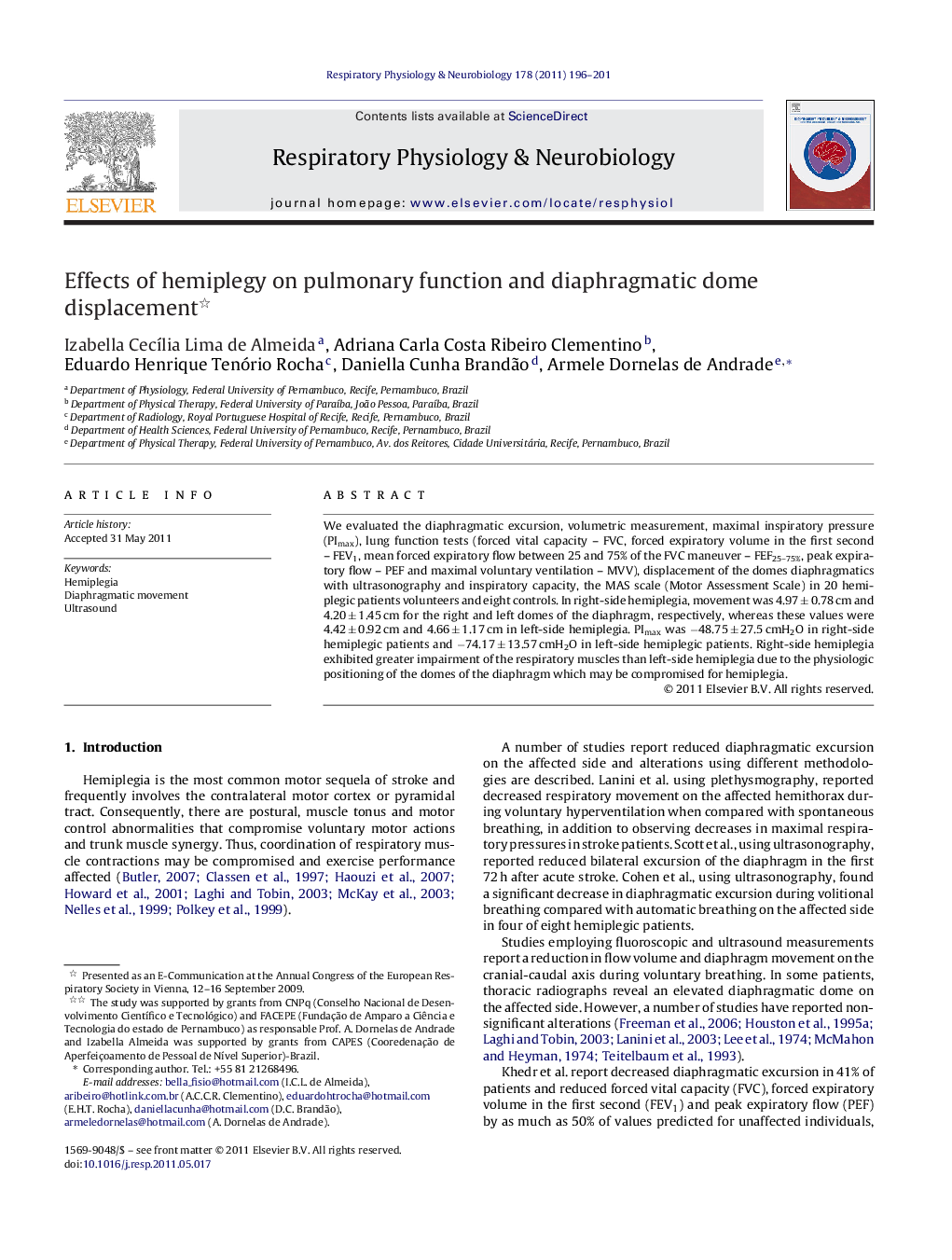| Article ID | Journal | Published Year | Pages | File Type |
|---|---|---|---|---|
| 5926459 | Respiratory Physiology & Neurobiology | 2011 | 6 Pages |
Abstract
We evaluated the diaphragmatic excursion, volumetric measurement, maximal inspiratory pressure (PImax), lung function tests (forced vital capacity - FVC, forced expiratory volume in the first second - FEV1, mean forced expiratory flow between 25 and 75% of the FVC maneuver - FEF25-75%, peak expiratory flow - PEF and maximal voluntary ventilation - MVV), displacement of the domes diaphragmatics with ultrasonography and inspiratory capacity, the MAS scale (Motor Assessment Scale) in 20 hemiplegic patients volunteers and eight controls. In right-side hemiplegia, movement was 4.97 ± 0.78 cm and 4.20 ± 1.45 cm for the right and left domes of the diaphragm, respectively, whereas these values were 4.42 ± 0.92 cm and 4.66 ± 1.17 cm in left-side hemiplegia. PImax was â48.75 ± 27.5 cmH2O in right-side hemiplegic patients and â74.17 ± 13.57 cmH2O in left-side hemiplegic patients. Right-side hemiplegia exhibited greater impairment of the respiratory muscles than left-side hemiplegia due to the physiologic positioning of the domes of the diaphragm which may be compromised for hemiplegia.
Keywords
Related Topics
Life Sciences
Biochemistry, Genetics and Molecular Biology
Physiology
Authors
Izabella CecÃlia Lima de Almeida, Adriana Carla Costa Ribeiro Clementino, Eduardo Henrique Tenório Rocha, Daniella Cunha Brandão, Armele Dornelas de Andrade,
